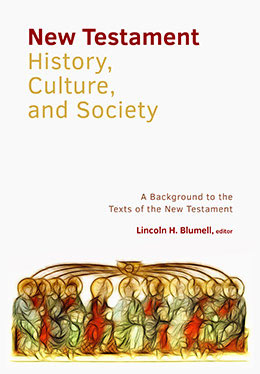Introduction
Lincoln H. Blumell, "Introduction," in New Testament History, Culture, and Society: A Background to the Texts of the New Testament, ed. Lincoln H. Blumell (Religious Studies Center, Brigham Young University; Salt Lake City: Deseret Book, 2019), xi–xii.
The New Testament is a compilation of twenty-seven texts written by various authors who labored under differing circumstances and dealt with a variety of issues and interests. While these texts were written during the first century AD, it was not until the fourth century that they collectively achieved a canonical status and were viewed as authoritative in matters pertaining to religious belief and practice. Thus, for more than sixteen hundred years this corpus has been the foundation of Christianity despite the countless ways it has been read and interpreted over the centuries.
Many twenty-first-century readers access these texts only via translation and live in lands far removed geographically and culturally from first-century Judea and other parts of the Roman world where much of the New Testament is set. For them, approaching these texts can be fraught with challenges. Accordingly, this volume is designed as a study companion that will help elucidate the text, history, culture, and society associated with the New Testament so as to provide modern readers with greater insight. Though this volume stands at more than eight hundred pages, it is not intended to serve as a comprehensive introduction, for that would require a treatment many times this length. Rather, it is more of a handbook that readers can consult topically to supplement their study of the New Testament.
The forty-three chapters herein range from the law of Moses and the intertestamental period to the First Jewish Revolt of AD 66–73 and the canonization of the New Testament. The opening section, “Jewish Background of the New Testament,” covers a host of topics, including the law of Moses, the intertestamental period, the Jerusalem temple, the Dead Sea Scrolls, rabbinic literature, notions of messianism in ancient Judaism, and modes of Jewish hermeneutics. There is also an image-laden chapter that provides a virtual tour of Jerusalem and the Temple Mount in the New Testament period. The array of topics in this section thus introduces readers to the larger Jewish context of the New Testament—scriptural, extrascriptural, and archaeological. The next section, “Greco-Roman Background of the New Testament,” expands the focus to survey the larger Greco-Roman world. Chapters cover Roman law, Greek and Roman philosophy and religion, Judea as a Roman province, and the First Jewish Revolt against Rome. Section 3, “Jesus and the Gospels,” begins by illuminating aspects of Jesus’s ministry, death, and resurrection and introduces readers to the canonical and noncanonical gospels. Following a lengthy review of Jesus’s mortal ministry in light of biblical and Restoration scripture are chapters on atonement theologies, economics in the first century, and a geographic survey of Jesus’s ministry.
Section 4, “The Apostle Paul, General Epistles, and Revelation,” devotes much attention to the life and letters of the apostle Paul and discusses the remaining writings of the New Testament. This is followed by “New Testament Issues and Contexts,” with chapters pertaining to women, family and marriage, clothing, worship, baptism, nonverbal communication, and prostration as they relate to the New Testament. Section 6, “The Text of the New Testament,” examines this book of scripture from a variety of perspectives. In addition to surveying the Joseph Smith Translation and tracing how the New Testament text is employed in Restoration scripture, the chapters also cover textual criticism, the King James translation, and the Greek text underlying the King James New Testament. The concluding section, “After the New Testament,” deals with early Christianity in the post–New Testament period and the canonization of the New Testament.
Given the breadth and depth of this volume, there is something for anyone who wants to gain a deeper understanding of the texts and background of the New Testament. While employing academic scholarship, this wide-ranging collection by more than three dozen specialists is written for readers who are nonspecialists. Chapters define technical vocabulary and include maps, tables, and images. Also, a list of further readings at the end of most chapters can be consulted for additional sources. As there is nothing quite like this volume for Latter-day Saint students of the New Testament, it is hoped that New Testament History, Culture, and Society will be a welcome addition to the personal libraries of those who are seeking a deeper engagement and understanding of the New Testament.
Lincoln H. Blumell, editor
